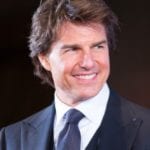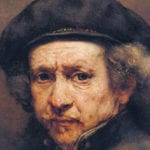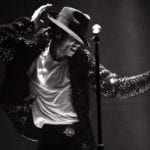 Weird Stuff
Weird Stuff  Weird Stuff
Weird Stuff  Mysteries
Mysteries 10 Tragic Disappearances and Deaths in Joshua Tree National Park
 History
History 10 Ways Childhood Really Sucked in the Old West
 Music
Music 10 Name Origins of Famous Bands from the 1990s
 Religion
Religion 10 Biggest Turnarounds by the Catholic Church
 Weird Stuff
Weird Stuff 10 Unbelievable Times Laws Had Unintended Consequences
 Humans
Humans Ten Historic Women Who Deserve Way More Credit Than They Got
 Movies and TV
Movies and TV 10 Films That Spawned Major Lawsuits
 History
History Ten Times Towns Were Wiped Off the Face of the Earth
 Creepy
Creepy 10 of the Most Disturbingly Haunted Public Houses in the UK
 Weird Stuff
Weird Stuff 10 Niche Subcultures That Are More Popular Than You Might Think
 Mysteries
Mysteries 10 Tragic Disappearances and Deaths in Joshua Tree National Park
 History
History 10 Ways Childhood Really Sucked in the Old West
Who's Behind Listverse?

Jamie Frater
Head Editor
Jamie founded Listverse due to an insatiable desire to share fascinating, obscure, and bizarre facts. He has been a guest speaker on numerous national radio and television stations and is a five time published author.
More About Us Music
Music 10 Name Origins of Famous Bands from the 1990s
 Religion
Religion 10 Biggest Turnarounds by the Catholic Church
 Weird Stuff
Weird Stuff 10 Unbelievable Times Laws Had Unintended Consequences
 Humans
Humans Ten Historic Women Who Deserve Way More Credit Than They Got
 Movies and TV
Movies and TV 10 Films That Spawned Major Lawsuits
 History
History Ten Times Towns Were Wiped Off the Face of the Earth
 Creepy
Creepy 10 of the Most Disturbingly Haunted Public Houses in the UK
10 Significant People Behind Famous Figures
We like to imagine that successful people are truly self-made, rising to prominence based solely on their own hard work and genius. But the truth is that everyone, even the great figures of history, needs a little help along the way.
10Genghis Khan’s Adviser
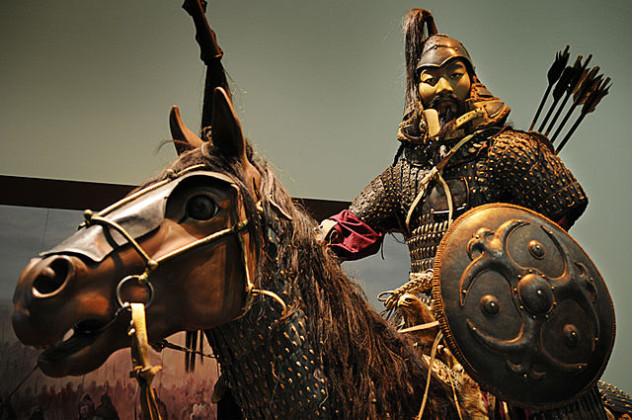
Yelu Chucai is the unknown figure behind the great success of Genghis Khan’s Mongolian empire. Not a Mongol himself, he had nomadic Khitan ancestry, but grew up in China. Captured by the Mongols, he met the Khan at 28 and quickly impressed him with his vast knowledge and administrative talent. Nicknamed “Urtu Saqal” for his long beard, he soon became one of Genghis’s most important advisers.
Chucai was most notable for convincing the Mongols to tax conquered cities instead of destroying them, arguing that the money and manpower gained from the cities could fund future conquests. With this line of reasoning, he almost single-handedly averted a Mongol plan to wipe out the northern Chinese peasantry in order to return the land to pasture.
When Genghis’s son and successor Ogodei mocked him for always pleading on the people’s behalf, Chucai famously responded that empires could be conquered on horseback, but never ruled from it. Ogodei apparently came to agree, since he retained Chucai as his chief adviser after the death of his father. However, his fellow advisers conspired against him and he fell out of favor until his death, when he was buried in great splendor by the Mongols who had once been his captors.
9Disney’s Sidekick
Great minds think alike and Walt Disney and Ub Iwerks were no exception. The pair became firm friends while working at the Pesman-Rubin commercial art agency in Kansas City. They soon teamed up to form Iwerks-Disney Commercial Artists, which didn’t last long. The flamboyant Disney eventually set off for Hollywood and formed his own production company, while the timid Iwerks remained in Kansas City doing animation for ad agencies. But Disney knew his friend had real talent and encouraged him to take a chance and join him out in California. In 1924, Iwerks agreed and Disney gave him a 20 percent ownership stake in the company.
Not long after they began working together, a rift occurred between Disney and Charlie Mintz, the distributor of Disney’s popular “Oswald The Lucky Rabbit” shorts. Since Mintz owned the rights to the character, he fired Disney and then hired most of his animators out from under him. But Iwerks refused to leave his friend and the pair quickly created a replacement character: Mickey Mouse.
Iwerks animated the early Mickey shorts almost by himself, which required him to turn out an incredible 600 drawings per day. Luckily, the shorts were a massive success and saved the company. Sadly, Disney and Iwerks had a falling-out a few years later and Iwerks left the company to strike out on his own. But together they had already changed animation history. While Disney was the brain behind Mickey, Iwerks was the animator that brought him to life.
8The Wright Brothers’ Mentor
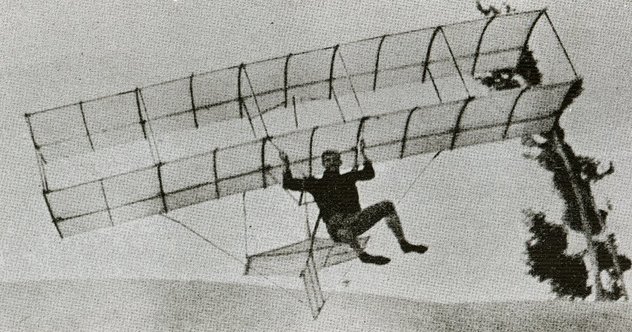
It is said that while the Wright brothers taught the world to fly, Octave Chanute taught the Wright brothers how to fly. A self-taught engineer, Octave Chanute became famous and successful for his unusual and creative designs. Among other things, he was the first person to realize that wood could be preserved by treating it with creosote. But Chanute’s real passion was flight. At the age of 54, he decided to focus his energies on developing the budding field of aviation.
Before Chanute, the study of flight was carried out haphazardly by independent researchers around the world. Almost single-handedly, Chanute turned it into a cohesive field of study. He started lengthy correspondences with anyone he could find working on the topic, collecting and collating their findings. He organized the first scientific aeronautical conferences and financially supported pioneers like Louis Mouillard and Otto Lilienthal. He debunked false breakthroughs and gathered the real ones in his classic handbook Progress In Flying Machines. He carried out numerous experiments of his own, happily sharing his data with anyone who was interested. The Chanute Glider (pictured above) was the most advanced aircraft of its time.
Chanute took a particular interest in the Wright brothers, who frequently wrote to him for advice. Their 1900 glider was based on his research, and Chanute often sent his assistants to help the brothers out. He was the one who suggested that they should conduct their experiments in a sandy location with strong winds, which prompted their move to Kitty Hawk. He believed more than anyone that the Wrights would succeed in achieving powered flight, which they did in 1903.
Sadly, Chanute fell out with the brothers in 1905, when they became involved in patent disputes with other early aviators. Chanute had never patented his own work, believing that technical knowledge should be distributed freely. He had always dreamed that the ability to fly would bring about a new age of enlightenment and saw the Wrights’ desire to control the new technology as selfish. Happily, they later reconciled enough that Wilbur Wright delivered Chanute’s eulogy.
7Apple’s Third Founder
Of course, most people have heard of Steve Jobs and Steve Wozniak, but there was actually a third Apple co-founder: Ronald Wayne. The engineer’s involvement with Apple started when he met Steve Jobs while working at Atari in the ’70s. Jobs asked for Wayne’s help drafting the original partnership agreement that established Apple. After Wayne mediated a dispute between Jobs and Wozniak, they asked him to come on board as a partner. Wayne was given 10 percent of the company, allowing him to act as a sort of tiebreaker between Jobs and Wozniak, who each got 45 percent of the shares. Wayne also designed Apple’s first logo, wrote the company’s first operating manual, and drew up most of the documents. As Wozniak explained in his autobiography, Wayne “seemed to know all the things we didn’t.”
But Wayne was a veteran of several failed business ventures and he feared Apple would also go under, putting him into debt. Additionally, he was significantly older than Jobs or Wozniak and felt unwilling to put in the relentless work required to make Apple a success. Less than a month after the company was formed, he sold his shares to Jobs and Wozniak for $800. He was later paid an additional $1,500 to forfeit any claims on the company. Wayne’s stock would be worth as much as $35 billion today. However, Wayne insists that he doesn’t regret leaving Apple, since he lacked any passion for computing. In fact, he’s never even owned an Apple machine, feeling too familiar with Microsoft Windows to bother switching. As he told CNN, “What can I say? You make a decision based on your understanding of the circumstances, and you live with it.”
6Martin Luther King’s Twin

Today, Ralph Abernathy is not as well-known as he should be. In part, that’s due to the scandal caused by his book, And the Walls Came Tumbling Down, which very briefly mentioned that Martin Luther King Jr. had engaged in extramarital affairs, including on the night before his death. The book made Abernathy a pariah among many of his former comrades, with Jesse Jackson writing that it “appeals to the most prurient tendencies in current public life and gives comfort to the civil rights movement’s enemies.” But during King’s life, there was no one closer to him than Ralph Abernathy.
In fact, King even described Abernathy as his best friend in his last sermon before he was assassinated. Abernathy was King’s closest ally and confidant at the height of the civil rights struggle, and King consulted him before all key decisions. They were basically inseparable, sharing everything from meals to prison cells, to the point that it’s hard to find a public photo of King without Abernathy visible in the background. Even the famous picture of King meeting Malcolm X has Abernathy standing right between them. They were soon referred to as the movement’s twins, while Abernathy was dubbed King’s alter ego.
Abernathy stayed with King right up until his assassination in 1968. They were standing on their hotel balcony when Abernathy stepped inside to put on some cologne. It probably saved his life. King was shot by a sniper mere seconds later.
5T.S. Eliot’s Biggest Fan
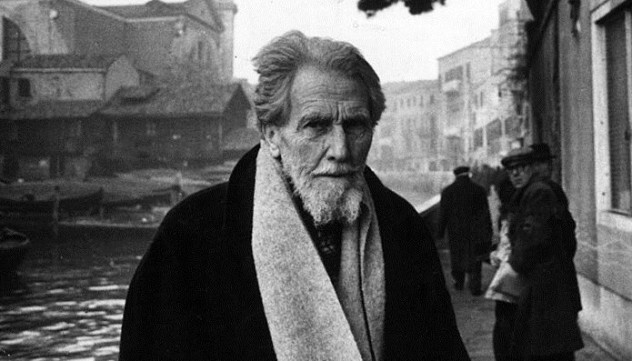
Today, T.S. Eliot is one of the most famous poets of the 20th century, while Ezra Pound’s works are only rarely read. But when the two met in 1914, Pound was far more popular and famous. Pound was a fan of Eliot’s “The Love Song Of J. Alfred Prufrock,” which he described as “the best poem I have yet had or seen from an American.” He soon took the younger man under his wing, forming one of the most unlikely friendships in literary history. Eliot was a somber and timid individual while Pound was an outrageously flamboyant troublemaker, an anti-Semite, and a fascist.
But Pound played a key role in Eliot’s development, editing his work masterfully and arranging for it to be published in influential magazines. Pound even broke the news to Eliot’s parents that their son was abandoning his career to become a poet. Without Pound, Eliot’s masterpiece “The Waste Land” might still be known as “He Do The Police In Different Voices.”
In fact, Pound had a habit of mentoring promising young authors who later became famous, helping to popularize everyone from Ernest Hemingway to James Joyce. Hemingway estimated that Pound spent only a fifth of his time on his own work, dedicating the rest to helping his friends: “He defends them when they are attacked, he gets them into magazines and out of jail. He loans them money. He sells their pictures. He writes articles about them. He introduces them to wealthy women. He gets publishers to take their books . . . And in the end a few of them refrain from knifing him at the first opportunity.”
Hemingway himself refrained from knifing Pound until the depths of his deranged anti-Semitism became clear during World War II, causing the author to declare his former friend “obviously crazy . . . He deserves punishment and disgrace but what he really deserves most is ridicule.”
4Fitzgerald And Hemingway
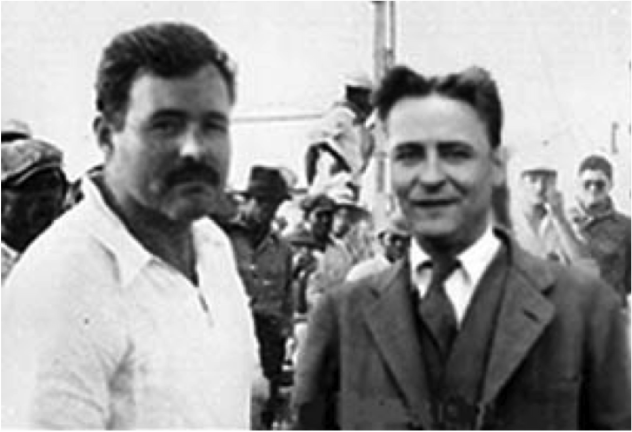
Pound wasn’t the only one to champion Hemingway during his early years. Arguably the greatest American writer in history might have remained completely unknown if not for the efforts of his friend and fellow author F. Scott Fitzgerald. The two first met in 1925, when Fitzgerald was already an acclaimed author and Hemingway was just a journalist with a handful of short stories and poems to his name. They quickly became close friends and Fitzgerald introduced Hemingway to his famous editor, Max Perkins.
The biggest help Fitzgerald offered Hemingway was editing his breakthrough work The Sun Also Rises, a novel about a dissolute group of American expatriates drifting from Paris to a bullfight in Spain. Perkins thought Hemingway’s first draft was unpublishable and Fitzgerald agreed, writing a detailed 10-page critique of the book’s “careless and ineffectual” aspects. He was particularly scathing about the opening chapter, declaring that “when so many people can write well [and] the competition is so heavy I can’t imagine how you could have done these first 20 pages so casually.”
To his credit, Hemingway took the advice, cutting the first 16 pages of the book entirely and making substantial revisions elsewhere. However, he lied about the issue in his posthumously published memoir A Moveable Feast, which claims that Fitzgerald never saw the book until the final draft was with the publisher.
3The American Who Fought For Castro
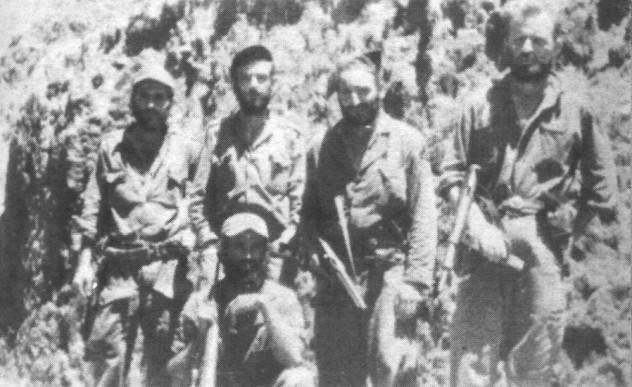
Besides Che Guevara and the Castro brothers, we’re largely unfamiliar with the people who fought against the brutal Cuban regime of Fulgencio Batista. Which is a shame, considering that we’re missing out on such amazing figures as William Alexander Morgan (pictured on the far right), the American who fought with Castro.
Born in 1928, Morgan left home as a teenager and joined the army at 18. After spending five years in jail for deserting, he got married and began running errands for the Mafia. In the 1950s, he became involved in smuggling guns to the revolutionaries fighting to overthrow Batista. Quickly becoming a believer in their cause, he joined their fight in 1957. Soon, Morgan rose through the ranks to become a comandante, a title only granted to one other foreigner, a certain Che Guevara.
After the fall of Batista in 1959, Morgan arrived in Havana to chants of “Americano!” Although staunchly anti-Communist, he initially remained loyal to Fidel Castro, who was not openly Marxist at that time. When he was offered a million dollars to turn against Castro, he played along, broadcasting the sounds of a fake uprising to lure a squad of Dominican invaders into an ambush. But when Fidel began to display socialist leanings, he turned against him for real, arranging to smuggle weapons to a new rebel group opposing Castro. He was caught and executed in 1961.
2Winston Churchill’s Father Figure
Born in Ireland, William Bourke Cockran came to the US at the age of 17. Settling in New York, he became an eminent attorney, served five terms in Congress, and was widely declared the greatest public speaker of his time. His skills as an orator were so good Churchill himself described him as the best speaker he had ever heard, declaring that he had “never seen his like, or in some respects his equal.”
Cockran apparently had a brief relationship with Churchill’s mother after the death of her husband, and they remained close friends. When Churchill was a young man, he decided to visit the US and Cockran agreed to put him up in his luxurious New York townhouse. Cockran eventually became something of a father figure to Churchill, advising and mentoring him in the art of public speaking.
Under Cockran’s tutelage, Churchill began to take an interest in politics and began emulating Cockran’s delivery pattern when addressing audiences. Churchill’s early political and economic views were also modeled on Cockran’s. Six years later, Churchill was elected to Parliament and became known for his own speaking skills.
1The Other Oracle
Regarded by many as the most successful investor of the 20th century, Warren Buffett, the “Oracle of Omaha,” is regularly ranked among the richest people in the world. But a big part in Buffett’s success story belongs to his little-known friend, Charlie Munger. The two have been friends for almost 60 years and Munger has served as Buffett’s second-in-command for the last 37. In a neat twist, Munger’s first job was actually working for Buffet’s grandfather at $1.98 an hour, although he didn’t meet the younger Warren until years later.
Before meeting Munger, Buffett followed the investing philosophy of his mentor, Benjamin Graham, who believed in buying underpriced assets and quickly selling them when their true value became apparent. This netted Buffett a huge fortune in his early years, but Munger wasn’t convinced it was the best way forward. Instead, he argued in favor of paying a fair price for good companies and then holding on to them as they grew, trusting that the long-term yields would justify the initial investment. It required patience and good management, but Munger argued that over time the profit margins would be even greater than Graham’s short-term buy-to-sell strategy.
Buffet found Munger’s ideas strange at first, but eventually came to embrace them, writing that “it took a powerful force to move me on from Graham’s limiting views. It was the power of Charlie’s mind. He expanded my horizons.” Munger’s philosophy eventually yielded huge results, helping to turn Buffett’s Berkshire Hathaway into one of the largest conglomerates in the world.


